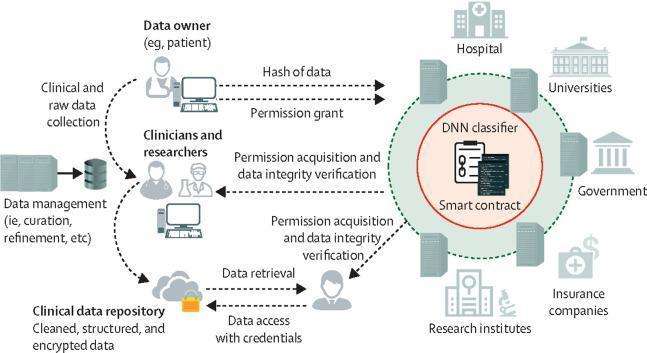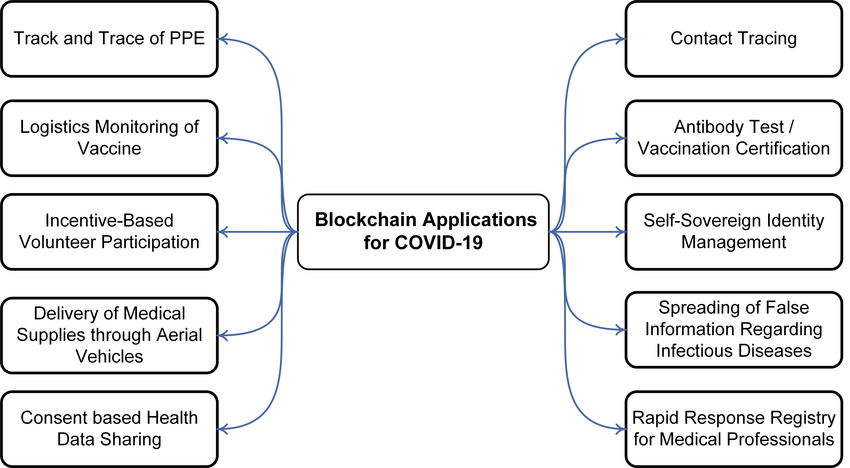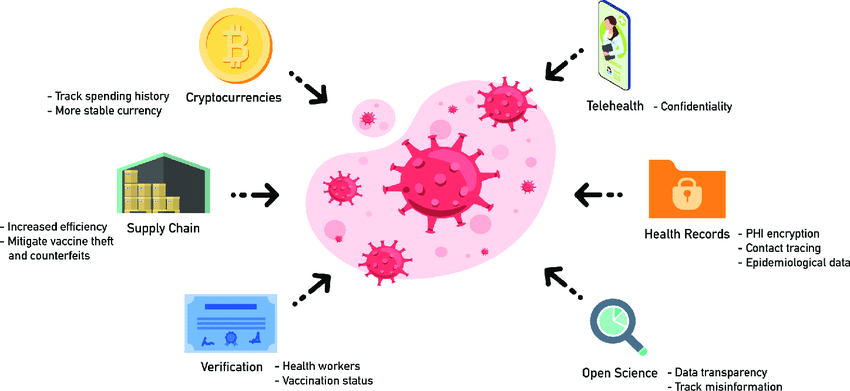Covid-19 exposed the flaws in our institutions for everyone to see. The world struggled through the pandemic despite several early warning systems in place. Supply shortages were rampant. Hospitals were flooded with patients they could not account for. The simple distribution and administration of vaccines proved a massive challenge amidst the public’s growing mistrust in institutions. The covid-19 pandemic was a turbulent learning experience for everyone.
This blog explores what blockchain technology offers to help prevent the next inevitable pandemic.

Contents
An avoidable disaster
The prevention and spread of disease are the biggest challenges public health organizations face today. There are various systems to monitor, identify, and track the spread of diseases. There are dozens of institutions in place that receive millions in funding for this exact reason. Yet the global response to covid-19 was chaotic, scrambled, and suboptimal in many ways.
At the beginning of the pandemic, stay-at-home orders were routinely flouted. Medical professionals scrambled to implement contact tracing. Hospitals were flooded with patients and relied on warehouses to supply them with life-saving medical equipment such as surgical masks and gowns.
Yet demand far surpassed supply because of improper warehouse management. Panic dominated the markets. Soap and other hygiene products flew off the shelves, and government agencies had to step in to prevent the hoarding of basic necessities and medical supplies.
Medical professionals found themselves attending to patients without basic protective gear. They rushed into high-risk areas with high viral loads to attend to patients. Millions of medical professionals went above and beyond to the point of complete burnout and breakdown.
The public grew to distrust the institutions on which they should always be able to rely on in times of need. It’s not hard to understand why. Historically, crisis events have been used to reduce the people’s liberty and freedom under the guise of providing protection. Privacy is a fragile thing and needs to be protected. But security comes with inconvenience. There was a tangible fear in the air that freedom once lost would not be returned.
The problem with manufacturing
The manufacturing of medical equipment like masks spans several countries. Each country creates individual components until they’re all combined into a single product at the end. This is done because producing the individual parts in several stages is the most cost-saving measure. The supply chain network has become extremely efficient over the years.
This means that costs have been minimized while profits have been maximized. But this comes with a lethal drawback: Few countries can manufacture life-saving protective gear on their own while most are dependent on others.
The existing supply network is complex, with many moving parts. This makes it highly vulnerable to a breakdown because of its complexity. Ideal for business but suboptimal to wage war against disease where time is of essence.
The supply chain took another fatal hit with the shutdown of several production facilities due to social distancing norms. Hospital networks were overburdened. Business simply could not be allowed to continue because there were no more hospital beds if anyone fall sick.
The warehousing and distribution of medical gear saw several setbacks. The distribution and administration of vaccines proved a challenge since they come with expiry dates. But organising the process of getting millions of people vaccinated takes time. Time, during which the vaccines we keep in storage begin to lose effectiveness and eventually expire.
This is what happened in Nigeria, as the government had to dispose of an incredible number of vaccines because they expired before they could mobilize the population quickly enough to vaccinate them.
Blockchain in patient surveillance
Blockchain is a globally distributed database that can’t be hacked, cheated, or altered once we enter the data. It’s a big spreadsheet that millions of computers keep a copy of at the same time.
The biggest power of blockchain is having a reliable record-keeping system.
With this record-keeping system, hospitals can keep records of patients. Patients can keep track of the vaccine they have taken, the doses taken so far, and the improvements in health from the vaccine. Government agencies can track the spread of disease across multiple states.
With blockchain, once data is collected, it cannot be changed. This ensures that there is only a single truth in record keeping. There are no conflicting databases or mismatched books.
Our local, national, and international doctors can access the blockchain to track the spread of covid-19 carriers. Likewise, distribution networks can track the inventory kept in warehouses without double-checking.
Insurance companies can look up patient profiles and learn about their risk status.
Veterinary doctors can track the spread of diseases in animals so they can take action before they begin to infect humans.
The patient’s entire health is carved into the blockchain, which is fully transparent yet resistant to hacking and access by unauthorized entities. With so much patient data on the blockchain, we can quickly react to protect the vulnerable population in our country.
Blockchain for disease surveillance
Contact tracing is one of the most effective ways to prevent the spread of diseases, especially before vaccines are produced.
This allows us to alert people that have been exposed to the disease. It allows us to predict future infection rates and ready the necessary amount of medical equipment and hospital beds. Blockchain technology is ready to reinforce existing contact tracing protocols to make them faster and more effective. A contact tracing system needs time to notify at-risk patients of surrounding positive cases. While existing contact tracing systems exist, they all operate on centralized servers, making them vulnerable to hackers and breakdown. They are a single point of failure. Blockchain-based contact tracing systems aim to decentralize the entire process to make them full-proof.
It is completely possible to combine smartphone technology with blockchain to track patients through their phones. This is what the World Health Organization, Oracle, and Microsoft are doing right now. They have joined hands to create an open data hub known as MiPasa. This tool aims to detect covid-19 carriers and track infection hotspots with GPS, bluetooth, and smartphone technology.
By connecting patients to blockchain, we can share medical information with organizations all across the world.
Our local, national, and international agencies can take measures to survey the spread of disease across state lines.
Blockchain for transparency
The power of blockchain lies in sharing information without revealing personal information. It uses asymmetric cryptography to secure transactions and keep them secure. The entire system is protected against hackers because each system has a public and private key. We can share our public key with others and don’t risk giving away our personal data by accident.
Senders and receivers are identified by their addresses, not their names. Private keys are kept secure through digital signatures. This is in stark contrast to existing medical systems, where studies estimate that 230,954,151 medical records in the USA have been lost, exposed, or stolen in the last 10 years alone.
With the loss of privacy becoming a big talking point for citizens everywhere, blockchain is ready to protect your personal information to ensure it cannot be sold to anyone.
In fact, there are numerous startups working to create medical apps with blockchain-enabled privacy right now. Rapid Medical Parts, MiPasa, Tymlex, and Civitas are all working together with government agencies to help secure patient data while making them more accessible to experts at the same time.
Conclusion
Covid-19 was the catalyst for blockchain technology that many were waiting for. Disease surveillance and contact tracing are made easier with the power of blockchain technology incorporated into smartphones.
With blockchain inventory management distributed, decentralized power, inventory and warehouse management have changed.
privacy doesn’t have to be lost as collateral damage as we all look for better security. Asymmetric cryptography and digital signatures are the future of privacy.
















